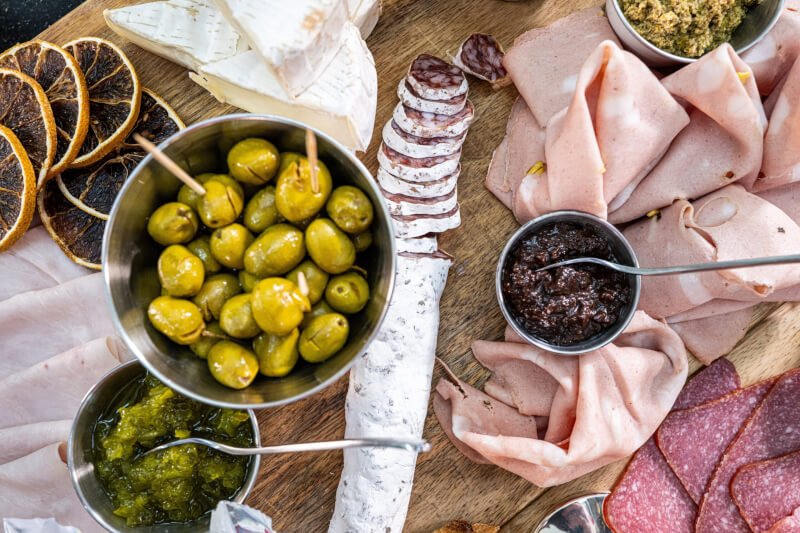Do you find yourself confused when it comes to deciding between cured and uncured meats at the grocery store? It’s a common dilemma for many people, as the labeling and terminology can be a bit perplexing. But fear not, we’re here to help! In this article, we will explore the key distinctions between cured and uncured meats, shedding light on the various methods of preservation, flavor profiles, and health considerations. So, the next time you’re browsing through the deli section, you’ll be equipped with the knowledge to make an informed choice. Let’s get started!

Cured Meats
Cured meats are a popular choice for many people due to their rich flavor and long shelf life. But what exactly are cured meats? In simple terms, cured meats are any type of meat that has undergone a curing process. This process involves the addition of certain ingredients, such as salt, sugar, and nitrates/nitrites, which help preserve the meat and enhance its flavor.
Definition of Cured Meats
To better understand what cured meats are, let’s delve into the specifics of the curing process. Curing is a method of food preservation that has been practiced for centuries. During this process, salt is applied to the meat, which helps draw out moisture and inhibits the growth of bacteria. In addition to salt, various types of sugar, such as brown sugar or maple syrup, can also be used to enhance the flavor of the meat.
One key aspect of the curing process is the inclusion of nitrates and nitrites. These compounds have antimicrobial properties, which help prevent the growth of harmful bacteria, such as Clostridium botulinum. While nitrates and nitrites occur naturally in some foods, such as vegetables, they are often added to cured meats in the form of sodium nitrate or sodium nitrite.

Curing Process
There are several methods used in the curing process, each adding its own unique flavor and texture to the meat. Let’s take a closer look at some of these methods:
Salt Curing
Salt curing involves coating the meat with a generous amount of salt and letting it sit for an extended period. This process draws out moisture, inhibits bacterial growth, and adds a distinct flavor to the meat.
Sugar Curing
Similar to salt curing, sugar curing involves coating the meat with sugar, typically in combination with salt. This method helps balance out the saltiness and gives the meat a slightly sweet taste.
Smoking
Smoking is a popular technique used in curing meats, where the meat is exposed to smoke generated from burning wood or other aromatic materials. This not only preserves the meat but also imparts a smoky flavor that many people find irresistible.
Air-Drying
Air-drying is another common method of curing meats, particularly popular for producing cured hams. This process involves hanging the meat in a cool, dry environment for an extended period, allowing it to slowly dry out and develop its flavor.
Pickling
Pickling is a method that involves soaking the meat in a mixture of vinegar, salt, and other spices. This not only helps preserve the meat but also infuses it with a tangy and slightly acidic flavor.
Types of Cured Meats
Cured meats come in various forms, each with its own distinct taste and texture. Some of the most popular types include:
Ham
Ham is perhaps one of the most widely recognized cured meats. It is usually made from pork and can be enjoyed both cooked and uncooked. With a rich, savory flavor, ham makes a delicious addition to sandwiches, salads, and many other dishes.
Bacon
Bacon is another beloved cured meat that needs no introduction. Made from pork belly, bacon is typically thinly sliced and then fried or baked until crispy. Its smoky, salty, and slightly sweet taste has made it a breakfast staple in many households.
Salami
Salami is a type of cured sausage made from ground meat, spices, and various flavorings. It is typically fermented and air-dried, resulting in a firm texture and a robust, tangy flavor. Salami can be enjoyed on its own or as an ingredient in sandwiches and charcuterie boards.
Prosciutto
Prosciutto is a dry-cured Italian ham that is known for its delicate, melt-in-your-mouth texture. Made from the hind leg of a pig, prosciutto is thinly sliced and often enjoyed as part of an antipasto platter or wrapped around fruits or vegetables for an elegant appetizer.
Corned Beef
Corned beef is a type of cured beef that has been preserved with large-grained rock salt, also known as “corns” of salt. It is typically associated with Irish cuisine and is often used in sandwiches or as the centerpiece of a hearty corned beef and cabbage meal.

Benefits of Cured Meats
Cured meats offer a range of benefits beyond their delicious taste. Here are a few reasons why they continue to be a popular choice for many:
Enhanced Flavor
The curing process infuses meats with a unique combination of salty, smoky, and savory flavors that can elevate any dish. The use of various spices and seasonings also adds depth and complexity to the taste profile of cured meats.
Extended Shelf Life
Due to the preservation techniques involved in the curing process, cured meats have a significantly longer shelf life than fresh meats. This makes them a convenient option for those who want to stock up on meat products without worrying about spoilage.
Increased Food Safety
The addition of nitrates and nitrites in cured meats acts as a natural preservative, helping to inhibit the growth of harmful bacteria. This can reduce the risk of foodborne illnesses, making cured meats a safer choice for consumption.
Concerns about Cured Meats
While cured meats have their merits, it’s important to be aware of certain concerns associated with their consumption. Here are a few things to consider:
Sodium Content
Cured meats tend to be high in sodium due to the use of salt in the curing process. Excessive sodium intake can contribute to high blood pressure and other health issues, so it’s important to consume cured meats in moderation and balance them with other low-sodium foods.
Potential Health Risks
The use of nitrates and nitrites in cured meats has been a topic of concern. When exposed to high heat during cooking, these compounds can form nitrosamines, which have been linked to an increased risk of cancer. However, there is ongoing debate and research on the potential health effects, and many countries have regulations in place to limit their use in cured meats.
Association with Processed Foods
Cured meats are often classified as processed foods, which have been associated with various health risks. Processed meats, including cured meats, have been linked to an increased risk of heart disease, stroke, and certain types of cancer. It’s important to include a variety of fresh, unprocessed foods in your diet and consume cured meats in moderation.
Uncured Meats
In recent years, many people have begun seeking out uncured meats as an alternative to traditional cured meats. But what exactly are uncured meats?
Definition of Uncured Meats
Contrary to what the name suggests, uncured meats are not completely without any curing process. Rather, they are meats that have been cured using natural agents instead of traditional curing methods involving nitrates and nitrites.
Natural Curing Agents
Uncured meats utilize alternative curing agents to achieve the desired flavor and preservation. For example, celery powder, sea salt, and vegetable juice powder can be used to provide a similar curing effect without the use of nitrates and nitrites.
Cooked vs Uncooked Uncured Meats
When it comes to uncured meats, there are both cooked and uncooked options available. Cooked uncured meats, such as cooked uncured bacon, have undergone a heat treatment that effectively prevents the growth of harmful bacteria. Uncooked uncured meats, on the other hand, require proper handling, cooking, and storage to ensure food safety.
Temperature Requirements
When preparing uncooked uncured meats, it is important to ensure that they are cooked to the appropriate internal temperature to kill any potential pathogens. This helps reduce the risk of foodborne illnesses, especially when dealing with pork products.
Safety Precautions
Due to the absence of nitrates and nitrites, uncured meats may have a shorter shelf life compared to cured meats. It is important to handle and store them properly to avoid any spoilage or bacterial growth.
Flavor and Texture Differences
Uncured meats often have a milder flavor compared to their cured counterparts. While some people may prefer this, others may find it lacks the distinct smokiness or saltiness commonly associated with cured meats. The texture of uncured meats may also differ, as the absence of nitrates can affect the meat’s color and consistency.
In conclusion, both cured and uncured meats offer their own unique qualities and considerations. Cured meats provide enhanced flavor, extended shelf life, and increased food safety but may contain higher sodium levels and potential health risks. On the other hand, uncured meats offer an alternative for those seeking to avoid nitrates and nitrites, with milder flavors and different texture profiles. Ultimately, the choice between cured and uncured meats boils down to personal preference and balancing the consumption of various food options in a healthy and well-rounded diet.

